ACTIVE CAMPAIGNS
Abolish Carceral Landscapes
The Abolish Carceral Landscapes campaign is driven by the first three Design Justice Demands that address the surveillance and suppression of our communities: 1) Divest and Reallocate Police Funding; 2) Cease the Implementation of Hostile Architecture & Landscapes; 3) Abolish Carceral Spaces. The carceral system is a form of social control that largely fails to prevent crime, rehabilitate, or contribute to societal well-being. Prisons, jails, detention centers, checkpoints, border and occupation walls, militarized surveillance towers, and police stations are spaces of punishment that inflict harm and extraction on Black, Brown and Indigenous bodies far beyond that of other communities. This campaign mobilizes designers to cease the design of prisons, jails, detention centers, and police stations as well as police offices and disciplinary spaces that are a part the the broader landscape of the Prison and Military Industrial Complexes. We work to raise awareness within our profession and support local abolitionist efforts, such as the National Council and Families For Justice as Healing, through protests and developing toolkits (stay tuned for this toolkit in early 2024).
Tactical Protests
DAP’s Tactical Protest takes one of the most basic tools of political activism -- the protest sign -- and turns it into an open-source, modular monument amplifying our demands for racial justice and an end to state-sanctioned white supremacy. Leveraging the same simple corrugated plastic format used for yard signs, DAP collective members crowdsourced hundreds of calls to action, words of revolutionary wisdom, and the names of those whose lives were stolen by police violence. These individual signs can be slotted together to form a structure that amplifies our calls for liberative action, and occupies space as both a statement and an invitation to participate.
By encouraging community members to read through the signs, select the ones that resonate with them on a personal level, and place their chosen messages onto the structure, folks began to engage with our organizers and one another about experiences of loss, and visions for a more just future. Upcoming iterations of this campaign will aim for even more interactivity, incorporating blank signs so that Tactical Protest monuments can reflect the stories and demands of their specific contexts as they are being installed.
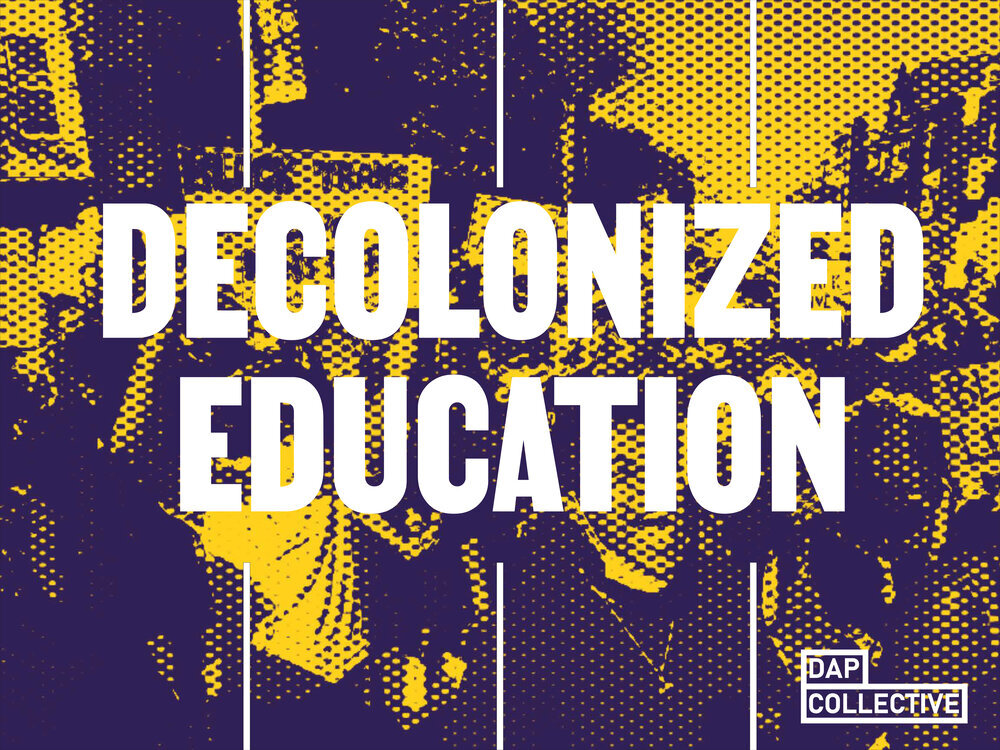
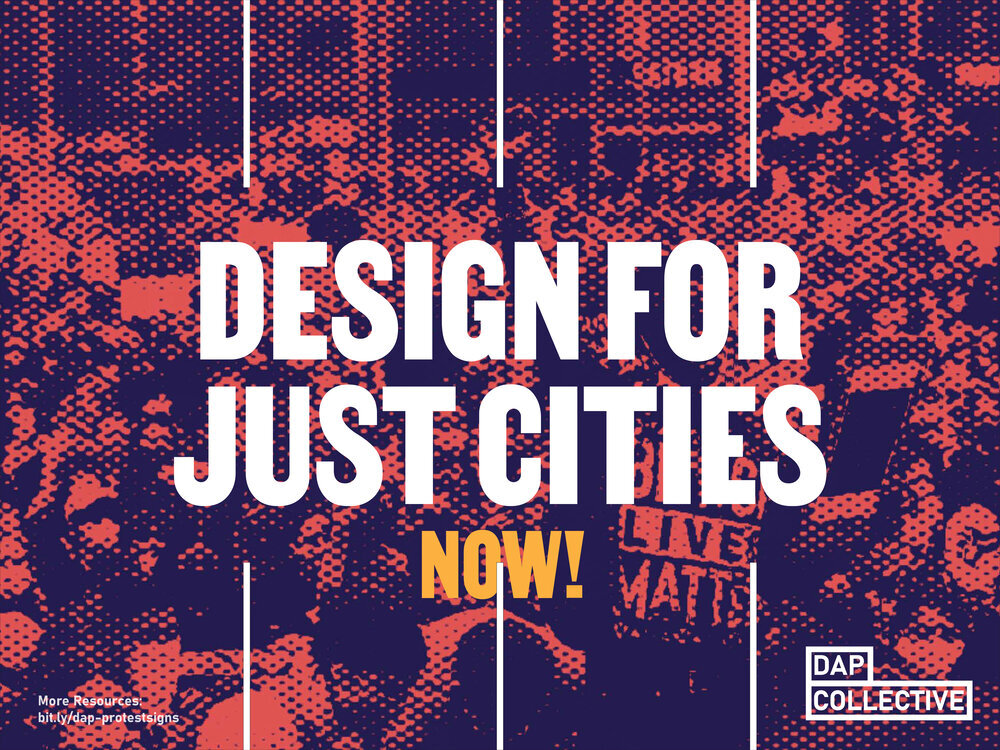

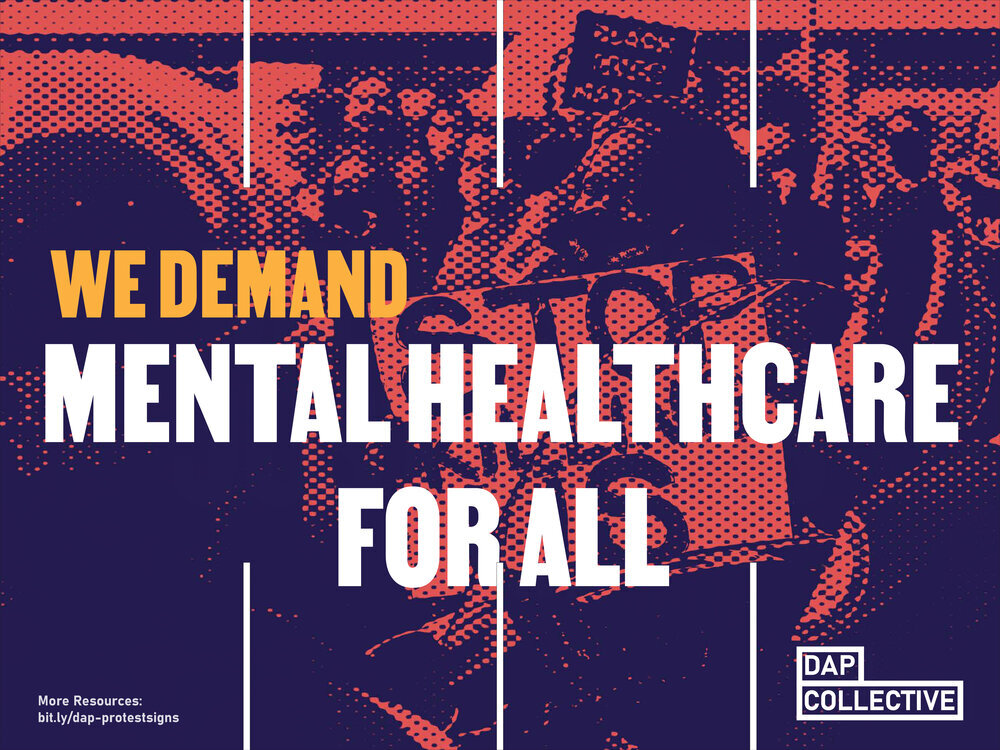

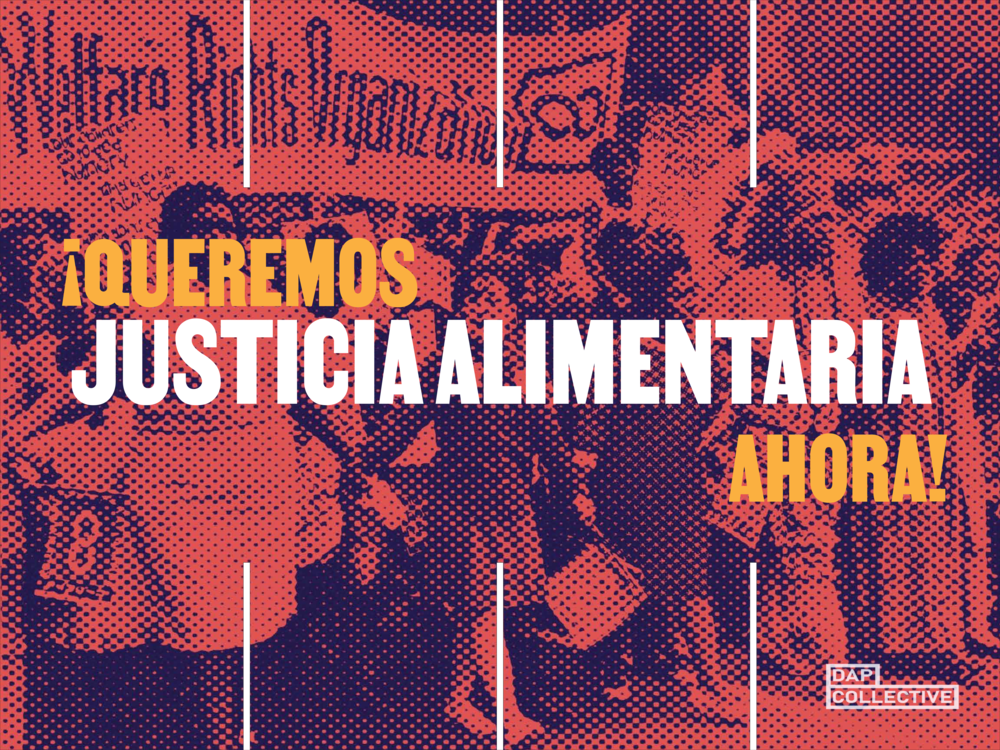
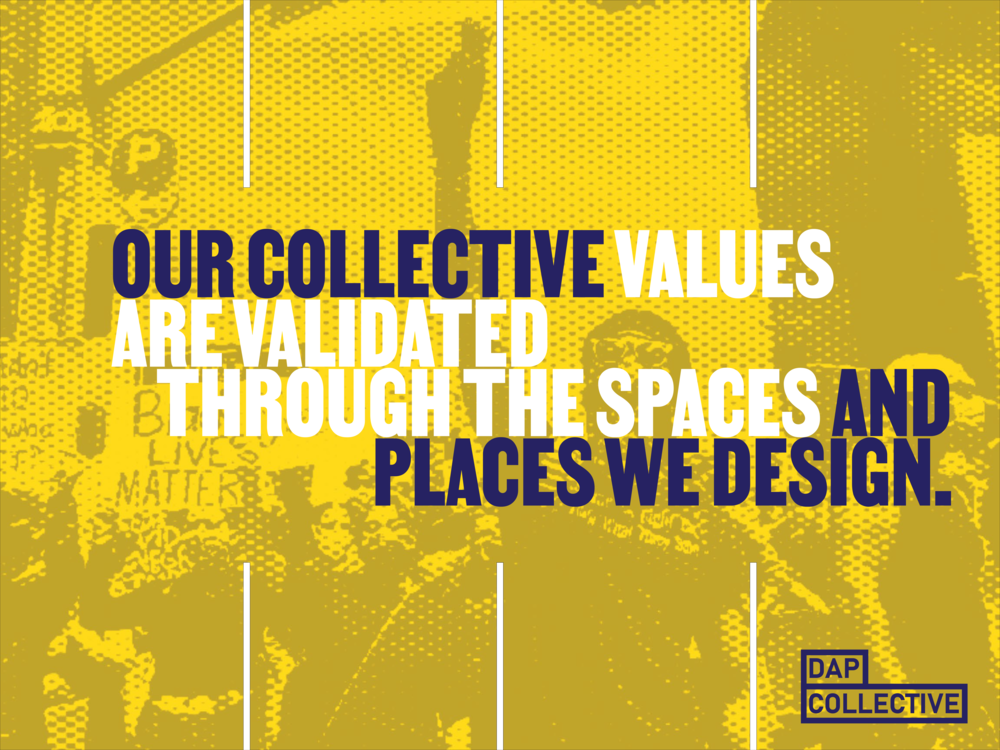
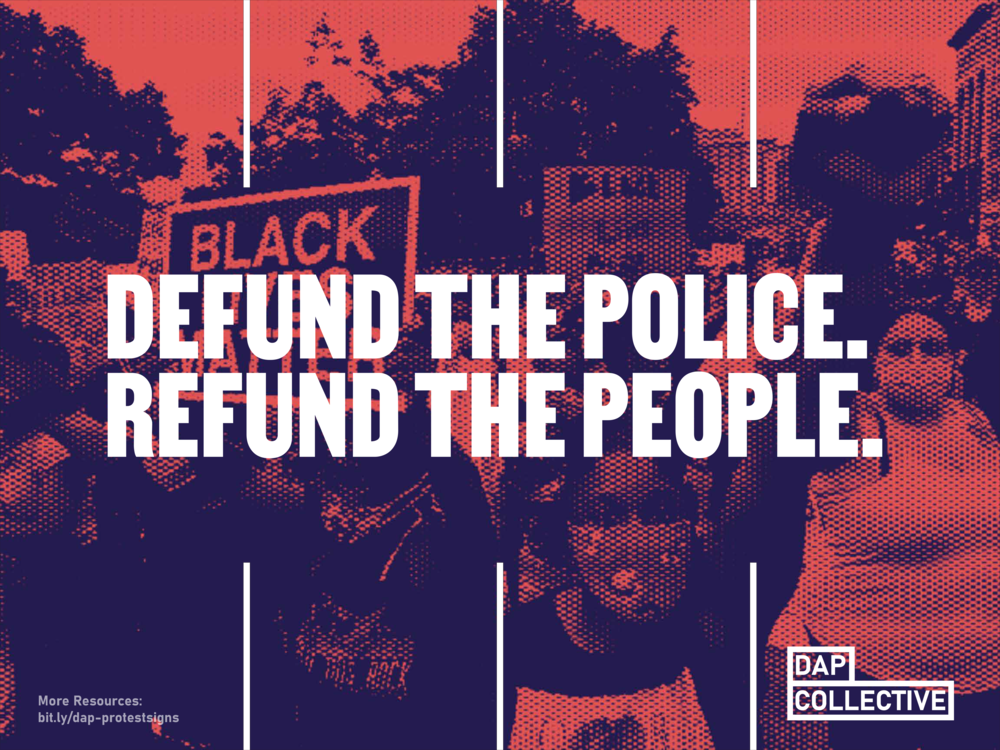
Design Justice Demands
The murders of George Floyd, Breonna Taylor, and Ahmaud Arbery may have sparked the most recent calls to stop killing black people, but it is a story as old as this nation. It is often the soft power of the built environment that provides the preconditions for that dehumanization and the subsequent atrocities. Our obligation to each other, to the built environment, and in solidarity with Black lives is to hold all complicit actors in these systems accountable, including organizations, schools, industry leaders, and legislative bodies. Since 2020, the Demands have grown in solidarity with other movements against militarism, settler-colonialism, prison-building, and for life-affirming institutions. While part of this campaign is to invite signatories and raise awareness, the Demands are also used to structure the rest of our Campaigns.
Design professions are as complicit as any. In accordance with our values and in defense of Black lives, we welcome you to join us in this pursuit of systemic justice.
CAMPAIGN ARCHIVE
Injustice Dataset
Team: Data + Research
The goal of this research is to create a collection of historical Datasets that identify spatial and racial injustices experienced by BIPOC communities in North America. The Datasets and subsequent analysis of the research will serve as the foundation for DAP Collective’s future initiatives. We are currently researching and collecting information for two Datasets focusing on the historical BIPOC experience of loss of land + loss of life: Displacement Datasets and Riot & Rebellion Datasets.
Buildable Memorials
Team: Direct Action
A collective national action designed to memorialize the people, places, and futures stolen by white supremacy and state-sanctioned racial violence. Buildable Memorials is working on national protest campaigns that hold various powers accountable for reversing anti-racist design practices in cities. Through a coordinated set of pre-designed structures, artists across the country will illustrate, assemble, and install these pop-up memorials in public spaces, sites of protest, and places where land and/or life have been lost to racial violence.


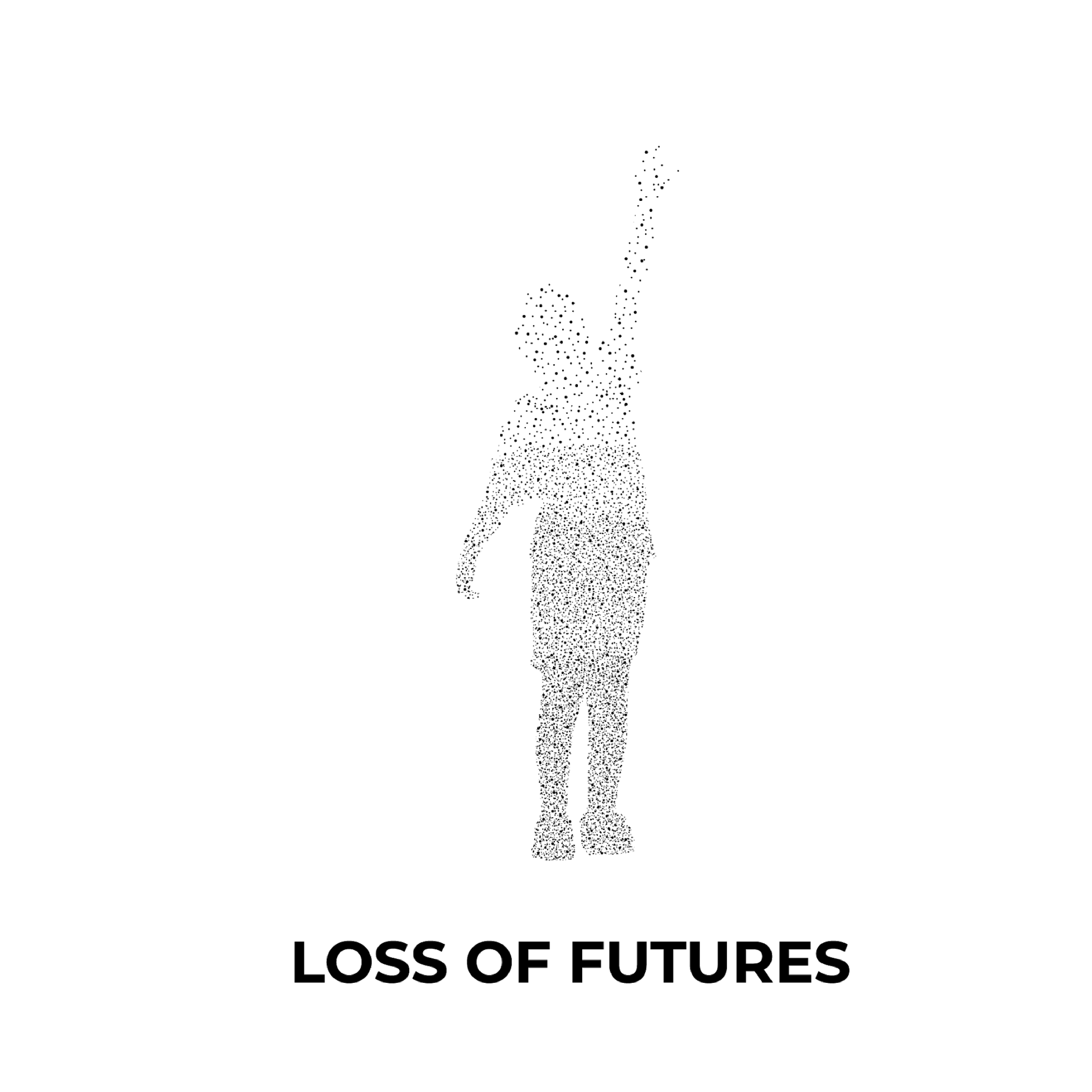
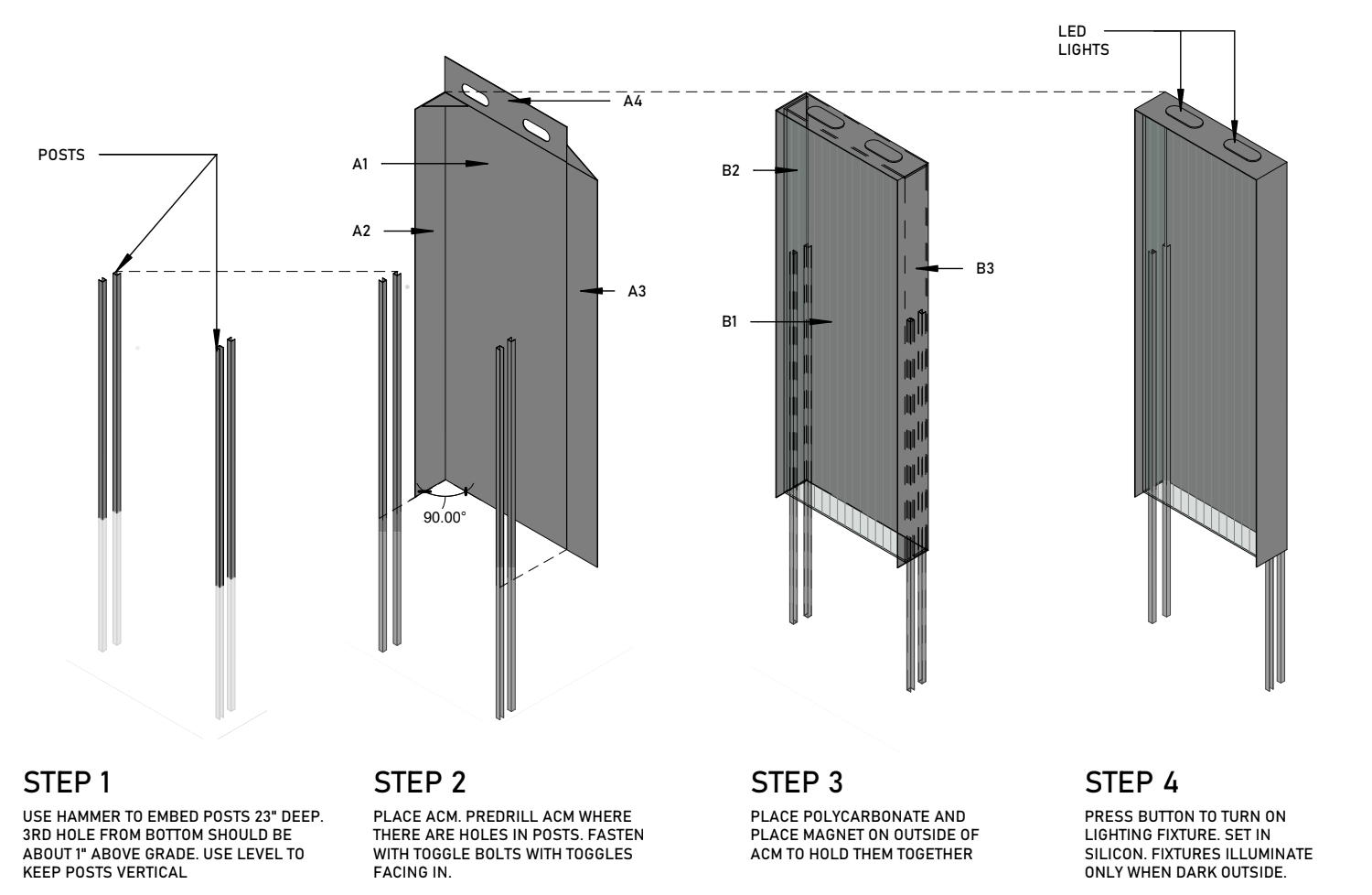
DAP Youth
Team: Youth Organizing
DAP Youth piloted the first 1-day Design Justice 101 workshop with the teens at VOX ATL, a “youth-voice movement where teens from diverse backgrounds create a stronger, more equitable community through leadership and uncensored self-expression.” DAP Youth plans to offer this workshop to more youth-led organizations and groups to build a community of future Design Justice activists! Next steps in this work include the development of formats that may range between 3-weeks to 10-weeks long, as either summer camp opportunities to further carve out space to unpack and explore each of the 9 Design Justice Demands, their contexts, and the agency of the designer and design tools as agents of change to enact transformation change toward just, liberatory future for all BBIA+ youth and their respective communities
Rapid Response
Team: Core Organizers
DAP Rapid Response is a team that strives to respond to current, urgent and pressing events and issues related to DAP’s mission through written reflection. Our members come from all walks of life and these thought pieces help us work through the intersectional identities that affect us, the design profession, and the built environment.
Design Education Actions Survey
Team: Student Organizing
Created by Design as Protest Academic Organizing x Emergent Grounds for Design Education
As the movement for Black liberation and protests against state-sanctioned violence rose to mainstream attention in 2020, the design’s field complicity in upholding white supremacy was also revealed. The complicity starts with our design education.
Concurrent with activism happening across the nation, students and alumni made demands that academic institutions be held accountable for perpetuating White Settler Design Culture. After these demands were sent over the last couple of months, now it’s time to look at these universities ask:
What steps have been taken? Have they been effective? What’s next?
This survey’s purpose is to help answer these questions and catalog the responses to these calls to action and help to compile an Actions Resource Index. Students, alumni, faculty, staff, and admin can complete this survey. Your feedback and privacy will be respected + all responses will be anonymous.
Electoral Days of Action
Team: Planning + Policy
We held two Electoral Days of Action around the 2020 US General Election, the first, focused on voter registration, amplifying grassroots voting rights organizations, and calling to support get out the vote efforts in North Carolina. We created a sharable voting guide, which was transformed by DAP Studio into sharable graphics. Electoral Day of Action #2 was focused on creating slogans that highlight key political issues. The slogans were developed by the Direct Action team into Tactile Protest signs, which is still an active campaign today!









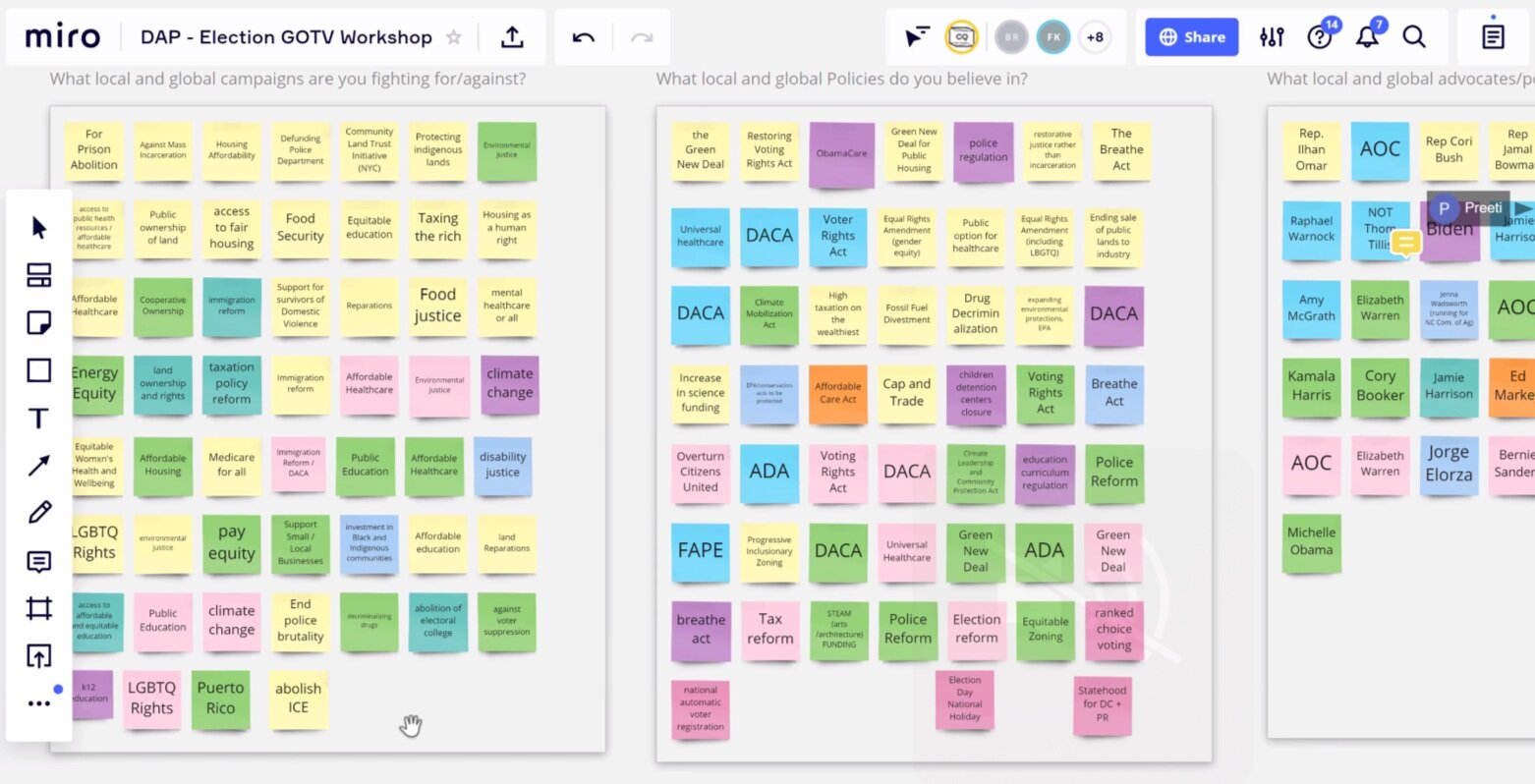
Design Education Unconference
Team: Academic Organzing
The Design Education Unconference held on August 29th, 2020, was a space for students and alumni organizing to transform their universities to discuss and learn from each other. Topics and questions for discussion were submitted by the conference participants, and through this, participants discussed and shared successes, challenges, and frustrations.
Conversations revolved around studio culture and the way you’re looked down on for not sacrificing everything for study and the need around the need to decode your universities’ bylaws to start establishing student presence in the administration. Participants talked about feeling the pressure of being the only BIPOC in a space, how we can start to build coalitions, and very importantly, how to continue the momentum of organizing: keeping structures fluid to accommodate different levels of commitment, celebrating small victories, and remembering that we’re not alone!
Direct Action Library
Team: Direct Action
The Design As Protest (DAP) Direct Action Library was created following its first National Call on June 3, 2020.
It is an open-source document of ideas, practices, and actions from 780+ participants in response to the following question posed to them: What action(s) do you think the design community could take in solidarity with current national protests and in the long-term defense of black lives?
Participant responses and ideas reflect the following 21 topical categories: Advocacy / Amplify Revolutionary BIPOC Work & Voices / Business Practices & Contracting / Engagement & Participation with Communities / Design Thinking / Design Competitions / Direct Action / Protest / Diversity & Inclusion in Hiring and Retention / Education & Training / Invest/Divest / Land Use & Zoning / Pedagogy / Policy / Preservation / Research and Data / Storytelling & Visual Communications / Urban Design & Architecture / Urban Planning / Visual & Tactical Art / Miscellaneous / Uncategorized


